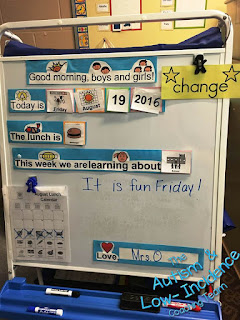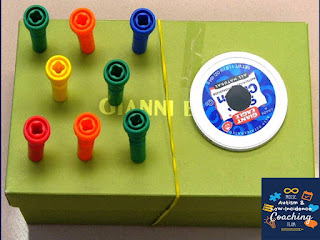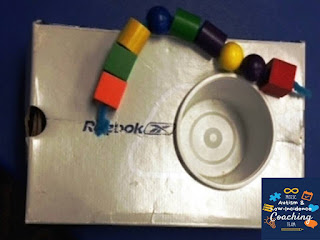We will share strategies to improve your student’s ability to cope with change using the Pillars of Performance (PoP) framework. PoP is a framework we use to help students acquire and apply social skills. These four pillars include: PRACTICE, PRIME, PROMPT & PRAISE. We have created a series of PoP cards to directly teach critical social skills.
First, introduce the concept of change with a social narrative like the one below:
Social Narrative: Doing things the same way each day feels comfortable. You know what to expect. Sometimes the routine has to change. Change does not mean bad, it just means different. Change may feel uncomfortable or make your hear beat fast. You might have lots of questions and this is okay. Your teacher can help you understand the change so you can feel better. Being able to say okay to change is a great skill to have. Change will allow you to try new things. Being able to change will help others feel calm. With practice you can learn to say okay to change!
Click the image below for a free handout of the Change PoP card. Print, cut, and laminate the card to use as a visual support when teaching this skill.
Let’s PRACTICE!
Practice makes perfect. In order to master any skill you need to deliberatly practice the skill. This makes it much easier to apply the skill in the moment when you need it the most. Try some of these practice activities to strengthen skills. Repeat, repeat, then repeat.Time to PRIME!
Present the Change card to the student prior to the change. You can place the change card on the student’s schedule to show when the change will occur. Write down the change on the front of the card. |
| Angela Crum Parkwood Elementary, Beavercreek |
 |
| Jennifer Schmidt Beavercreek High School, Beavercreek |
| Maggie Brackman Northwood Elementary, Northmont |
Show the student the back of the Change card to present the priming bullets that review the strategies you have practiced.
If you know in advance that a change will most likely occur, such as a fire drill, substitute teacher, or 2- hour delay, you can create a social story. You can find free social stories online such as this one that you can edit to meet your specific needs:
 |
| Molly Stanifer Bell Creek Intermediate, Bellbrook |
 |
| America Swatzel Dixie Middle School, New Lebanon |
 |
| Jolene Allen Brantwood Elementary, Mad River |
 |
| Mackenzie Harris Primary Village South, Centerville |
Consider the use of video to prime a student for change. Capturing video of a new location or a new routine that the student can view in a calm and structured way can help the student feel familiar with the change before it happens. Below is an example of a video you can create to prime a student for a transition to a new building:
 |
| Natalie Griffen Smith Middle School, Vandalia |
 |
| Shannan Vance Valley Forge Elementary, Huber Heights |
Below are examples from one of our teachers using the Change Card to prime her students that there is going to be a change. She uses a large change card on her morning message board to review scheduled changes such as a fire drill, field trip, or assembly.
 |
| Emily Ottmar Stevenson Elementary, Mad River |
Classroom staff keep a small card on their lanyard to prime individual students for any routine changes.
 |
| Emily Ottmar Stevenson Elementary, Mad River |
Having change cards readily available around the classroom is another great strategy!
 |
| Jessica Stewart Trotwood ELC, Trotwood |
PROMPT
Even with an advanced priming session, the student may become anxious when the change comes up in the schedule. Use the Change card and any written scripts or visuals (schedules, cartoons, etc.) as in-the-moment visual prompts to reassure that the change will be okay. Sometimes giving the student a reassuring statement they can read to themselves as they engage in the change is helpful. If the student continues to be frustrated, prompt or model the use of the calming strategy. Hopefully, you have been able to dedicate ample structured time to develop a positive response to the Change card, so when it comes up, the student’s body response can remain calm.
Give PRAISE!
This final pillar is the most important. We know that in order to increase any skill we need to actively reinforce the skill. Any time you notice that the student is responding positively to a change, provide specific verbal praise, such as “I love how you said okay to something different”. Some students may need tangible reinforcement.Let your student know you are proud of them and that they are getting so good at saying “okay” to change!
That’s it! Those are the 4 pillars to teach your students how to cope with change. Each pillar is important in supporting the application and generalization of this critical skill. Taking the time to implement all 4 pillars will result in the outcome you want. It may take some time so be patient and have fun with it. Teaching the skill with a positive attitude will help the student develop a positive association with the strategies. Developing your student’s confidence and ownership of the goal will help your student succeed.





























